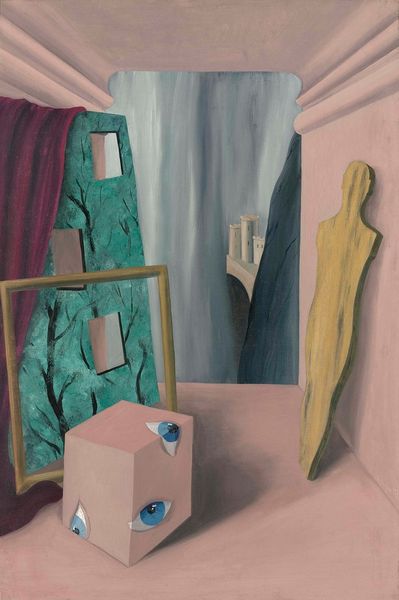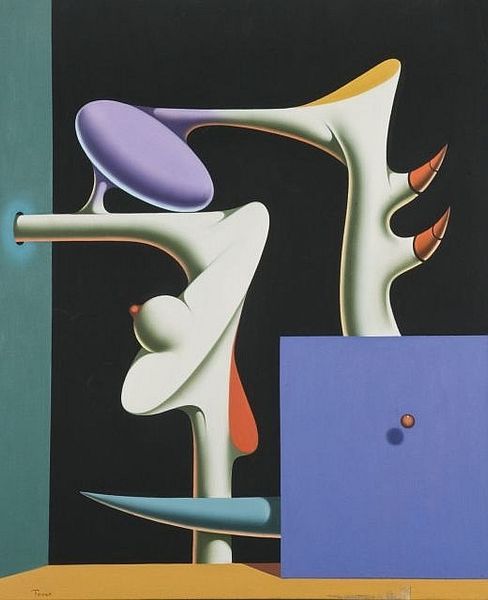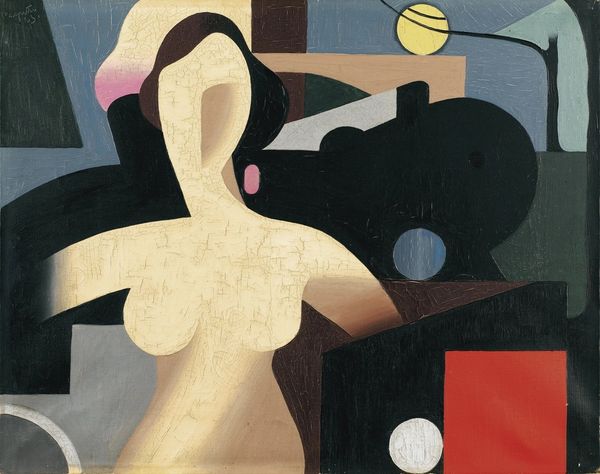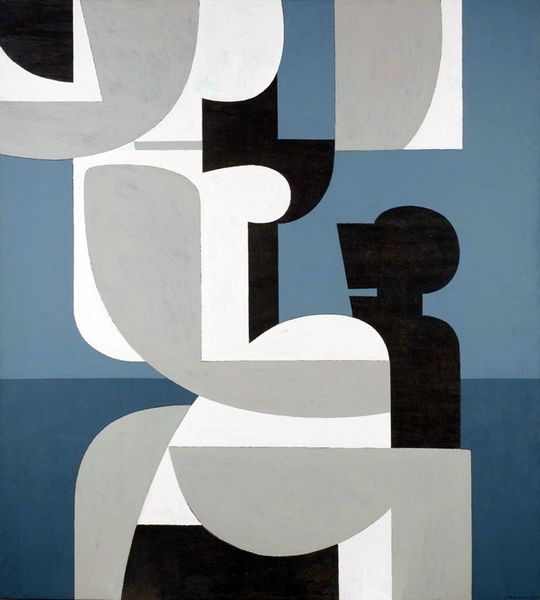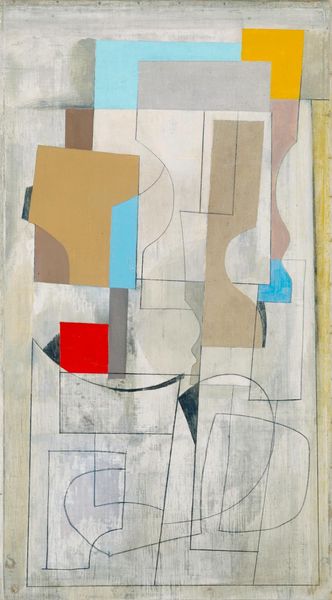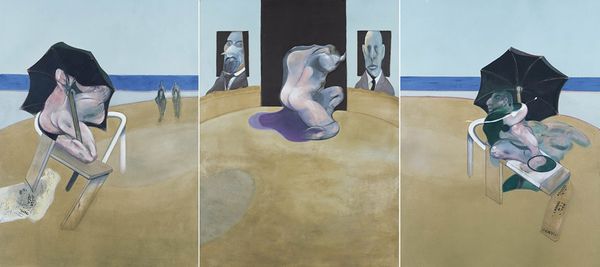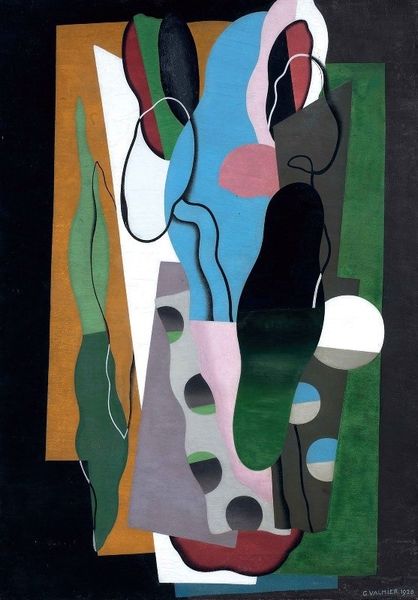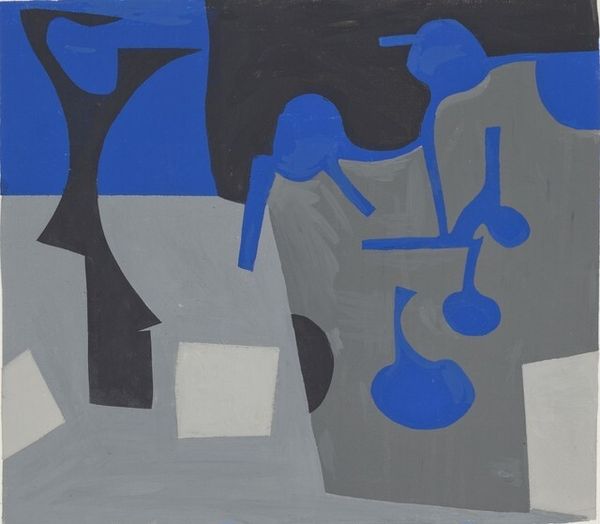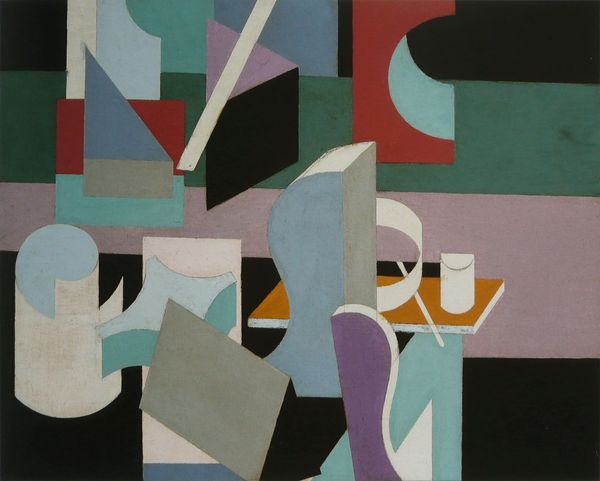
painting, oil-paint
#
portrait
#
cubism
#
water colours
#
painting
#
oil-paint
#
figuration
#
geometric
#
watercolour illustration
#
modernism
Copyright: Sandor Bortnyik,Fair Use
Sándor Bortnyik made this painting, ‘Woman with Geometric Forms,’ in 1929. It offers us a window into the artistic and social currents of interwar Hungary. Bortnyik's style, with its simplified forms and cool palette, reflects the influence of the Bauhaus movement. The figure of the woman, rendered in geometric shapes, is both modern and somewhat detached, reflecting the changing role of women in society during this period. Hungary, after the collapse of the Austro-Hungarian Empire, was grappling with rapid industrialization and shifting social norms. Artists like Bortnyik engaged with these changes, often using abstraction to comment on the alienation and fragmentation of modern life. To fully understand this work, we need to look at the history of modernism in Eastern Europe, the role of state patronage in the arts, and the impact of political upheaval on artistic expression. Art history is, after all, a social history.
Comments
No comments
Be the first to comment and join the conversation on the ultimate creative platform.
